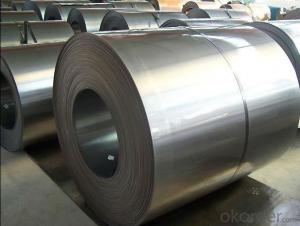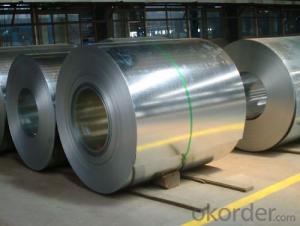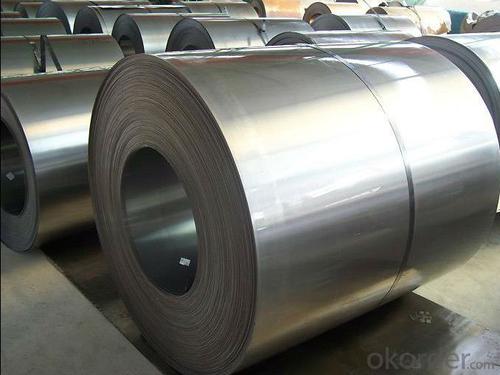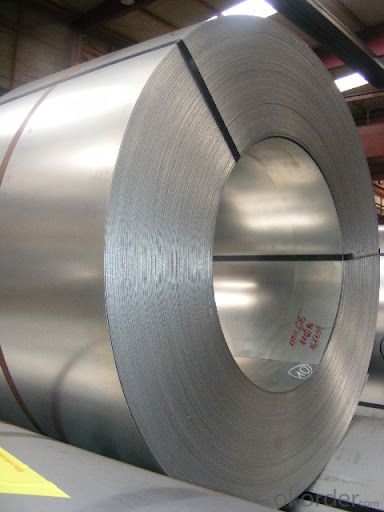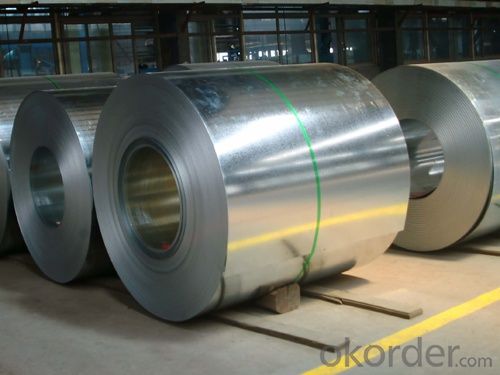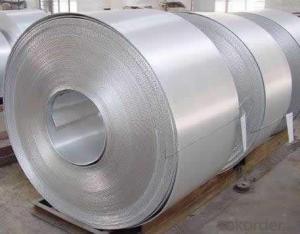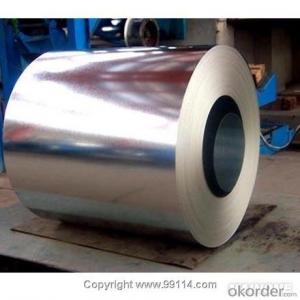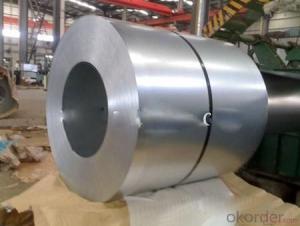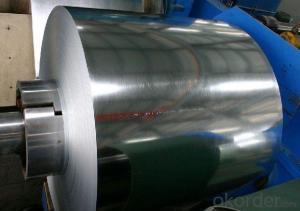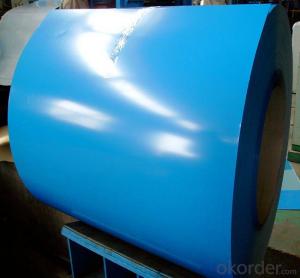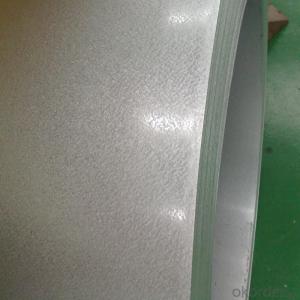Al-Zinc Coated steel rolled coil for roofing
- Loading Port:
- Tianjin
- Payment Terms:
- TT OR LC
- Min Order Qty:
- 25 m.t.
- Supply Capability:
- 30000 m.t./month
OKorder Service Pledge
OKorder Financial Service
You Might Also Like
Structure of Al-Zinc coated steel coil

Description of Aluminum Zinc Rolled Coil
The detailed information for the Al-Zinc coated steel coil is as following and it is mainly using for roofing producing, making ceiling grid and all kinds of roll forming structure.
Thickness: 0.20mm to 1.20mm
Width: 914mm, 1000mm, 1200mm, 1219mm and 1250mm, or slit narrow strip according to customer request, can be slit from 20mm to 610mm.
Coil ID: 508mm
Coil weight: 3 tons to 6 tons
Thickness tolerance: +/- 0.02mm or according to customer request.
Main Feature of Al-Zinc coated steel coil
1.Corrosion resistance: It mainly depends on the aluminum protection. When the zinc being worn, the aluminum will form a dense layer of aluminum oxide, resist corrosion material to prevent further corrosion inside.
2. Heat resistance: Aluminum zinc alloy steel sheet has excellent heat resistance, can withstand high temperatures over 300 centigrade, and is similar with aluminized steel high temperature oxidation resistance. It often used in chimney pipes, ovens, fluorescent lighting device and the device cover.
3. Heat reflective: Galvanized steel plate heat-reflective high rate is twice as galvanized steel, often used to make insulation materials.
4. Economy: Because density of 55% AL-Zn is smaller than the density of Zn, so in the same weight and thickness of Galvanized zinc layer, aluminum-zinc steel plate is larger area more than 3% of galvanized steel sheet.
Applications of Al-Zinc coated steel coil
1. Construction and building: roofing; ventilating duct; handrail; partition panel;etc.
2. Electric appliance: refrigerator; washing machine; refrigerator; DVD;etc.
3.Transportation: oil tank; road sign; etc.
4.Agriculture:barn; etc.
5.Others:vending machine; game machine; etc.
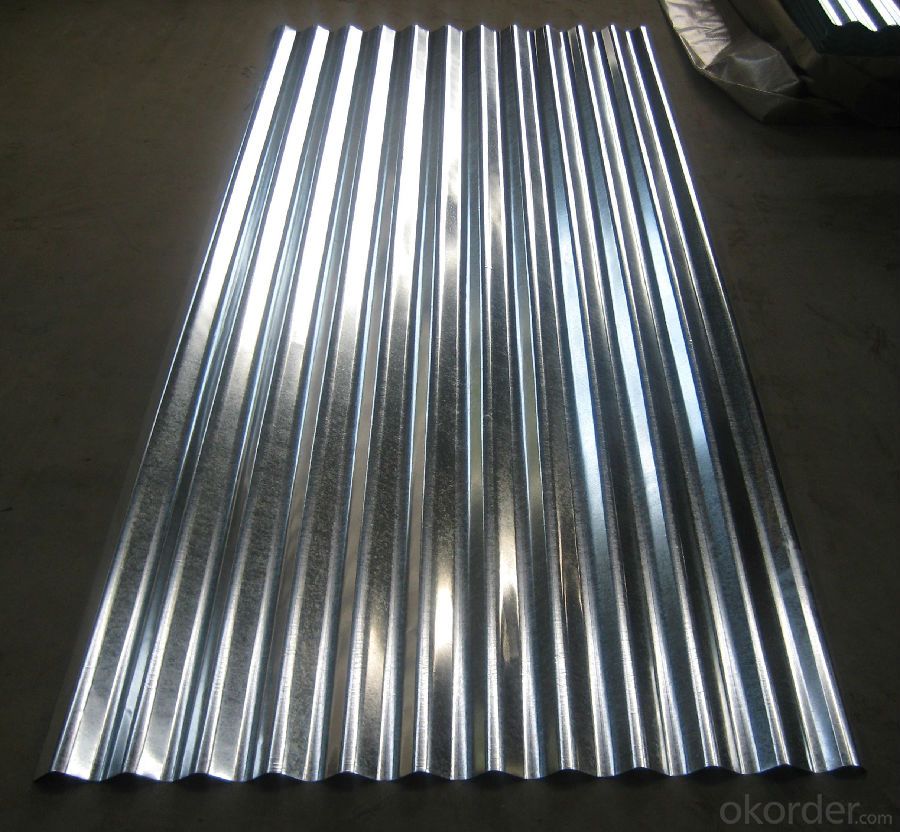
Specifications of Al-Zinc coated steel coil
Prepainted galvanized steel coil ( PPGI ) | Prepainted galvalume steel coil ( PPGL ) | |
Standard | JIS G3312 CGCC | J IS G3322 CGLCC |
Valid thickness | 0. 16 ~1. 2 0mm | 0. 16 ~1. 2 0mm |
Coil width | 600~1250mm | 600~1250mm |
Coil ID | 508mm & 610mm | 508mm & 610mm |
Coil weight | 3~5 tons | 3~5 tons |
Coating | 4 0~275 g/m2 | AZ30 to AZ150 |
Paint t hickness , top side | 15~25 microns | 15~25 microns |
P aint t hickness , reverse | 5~7 microns or 15~25 microns | 5~7 microns or 15~25 microns |
Color | any RAL code | any RAL code |
Package | vertical, eye to sky & horizontal | vertical, eye to sky & horizontal |
MOQ | 25 tons | 25 tons |
FAQ of Al-Zinc coated steel coil
We have organized several common questions for our clients,may help you sincerely:
1. What is the minimum order quantity ?
Our MOQ is 50mt for each size. And we will consider to give more discount if you make big order like 1000 tons and more. Further more, the more appropriate payment term your offer the better price we can provide.
2. How long can we receive the product after purchase?
Usually within thirty working days after receiving buyer’s advance payment or LC. We will arrange the factory manufacturing as soon as possible. The cargo readiness usually takes 15-25 days, but the shipment will depend on the vessel situation.
3. How to guarantee the quality of the products?
We have established the international advanced quality management system,every link from raw material to final product we have strict quality test;We resolutely put an end to unqualified products flowing into the market. At the same time, we will provide necessary follow-up service assurance.
- Q: What are the different coil packaging materials used for steel coils?
- There are several different coil packaging materials used for steel coils, each offering unique properties and benefits. Some of the most common materials include: 1. Stretch film: This is a popular choice for coil packaging due to its excellent flexibility and ability to tightly wrap around the coil. Stretch film provides good protection against dust, moisture, and scratches. 2. Steel strapping: Steel strapping is a robust and durable option for securing steel coils. It offers high tensile strength and resistance to breakage, ensuring the coils remain tightly bound during transport or storage. 3. Plastic strapping: Plastic strapping is a lightweight and cost-effective alternative to steel strapping. It offers good shock absorption and is resistant to rust and corrosion. Plastic strapping is often used for smaller or lighter steel coils. 4. Paperboard: Paperboard is a recyclable and eco-friendly packaging material. It provides a protective layer against dust and minor impacts, while also allowing slight breathability to prevent moisture buildup. 5. Wooden crates: Wooden crates are commonly used for large or heavy steel coils. They offer sturdy support and protection, preventing any damage during handling, transportation, or storage. 6. Corrugated cardboard: Corrugated cardboard is a versatile and lightweight packaging material suitable for smaller steel coils. It provides cushioning and protection against minor impacts, as well as being easily recyclable. The choice of coil packaging material depends on various factors such as the size and weight of the steel coils, transportation requirements, and desired level of protection. Each material has its own advantages and should be selected based on the specific needs of the steel coil packaging.
- Q: How are steel coils used in the production of kitchen appliances?
- Steel coils are used in the production of kitchen appliances as they are transformed into various components such as panels, frames, and structural elements. These coils are typically cut, shaped, and formed to create the necessary parts for appliances like refrigerators, ovens, and dishwashers. The high strength and durability of steel make it an ideal material for these appliances, ensuring their longevity and reliability.
- Q: How are steel coils packaged for transportation?
- Steel coils are typically packaged for transportation using a variety of methods to ensure their safe and secure delivery. The packaging process involves several steps to protect the coils from damage during transit and to facilitate their handling and loading onto trucks, ships, or trains. Firstly, steel coils are tightly wound and bound using steel straps or bands to keep them compact and prevent unwinding. These straps are usually made of high-strength steel and are securely fastened around the circumference of the coil at regular intervals. This helps to maintain the coil's shape and prevent any movement during transportation. Next, the coils are often placed on wooden or steel pallets to provide a stable base and facilitate handling with forklifts or cranes. The pallets are usually sized to fit the dimensions of the coils and are designed to withstand the weight and stress of the loaded coils. To provide additional protection, steel coils are often covered with a layer of protective material such as plastic or paper to shield them from moisture, dust, and other potential contaminants. This wrapping also helps to prevent scratching or damage to the outer surface of the coils. Furthermore, to secure the coils and prevent shifting during transit, they are often placed within a steel or wooden crate. These crates provide an extra layer of protection and stability, particularly for larger coils or when multiple coils are being transported together. Finally, once the coils are properly packaged, they are typically loaded onto flatbed trucks, shipping containers, or railway cars for transportation. During loading, proper care is taken to ensure that the coils are positioned securely and that weight distribution is balanced to prevent any potential damage or accidents during transit. In summary, steel coils are packaged for transportation by tightly binding them with steel straps, placing them on pallets, covering them with protective material, and, if necessary, enclosing them within crates. This packaging process helps to safeguard the coils and ensure their safe and efficient transportation to their destination.
- Q: i wanna buy a sharp carbon steel sword the swords i want are a 200 layer carbon steel katana or a hand forged high carbon steel katanna or a hand sharpened sword which one would be sharper/stronger
- Carbon steel is a generic term. There are many different grades of carbon steel consisting of several different components of various amounts, and there are different types of treatment the steel can go through that changes it's quality. Carbon steel swords are a step up from the crappy stainless steel swords, and other alloys. Sword quality completely depends on the smith. 200 layers doesn't mean there won't be any imperfections. Sword makers make mistakes, especially the lesser experienced ones. Look into the maker(s) of the sword you're looking to buy. Find information on them before deciding. Carbon steel is the steel to have, but that doesn't exclude good or bad quality. Sharpness will depend on the the steel and the smith.
- Q: What are the different methods of coil blanking for irregular shapes?
- Coil blanking for irregular shapes can be achieved through various methods. Among these methods, one commonly employed technique is laser blanking. By utilizing a high-powered laser, the shape is directly cut from the coil with exceptional precision. This method proves especially effective for intricate shapes, minimizing wastage. Another approach is water jet blanking, where a forceful stream of water mixed with abrasive particles is employed to cut the shape from the coil. Water jet blanking is particularly suitable for thicker materials or situations where heat sensitivity is a concern. Additionally, die blanking involves the utilization of a die to stamp out the desired shape from the coil. This method is frequently applied in large-scale production runs and can be automated for improved efficiency. Lastly, plasma blanking utilizes a plasma torch to cut the shape from the coil. It is commonly employed for thicker materials or situations requiring high cutting speeds. The choice of coil blanking method for irregular shapes is dependent on factors such as material thickness, shape complexity, production volume, and desired precision. Each method possesses its own advantages and limitations, necessitating careful selection to achieve optimal results.
- Q: How are steel coils used in the production of oil and gas pipelines?
- Steel coils are used in the production of oil and gas pipelines as they provide the necessary strength and durability required for transporting petroleum products over long distances. These coils are formed into pipes through various manufacturing processes, such as hot rolling or cold forming, and then welded together to create a continuous pipeline. The high tensile strength of steel coils ensures that the pipelines can withstand the high pressure and harsh environmental conditions associated with oil and gas transportation.
- Q: What are the challenges in coil blanking for high-strength steel?
- Coil blanking for high-strength steel poses several challenges due to the unique properties of this material. One of the main challenges is the high tensile strength of the steel, which makes it more difficult to cut and blank compared to conventional steel grades. The high-strength steel is typically harder and less malleable, leading to increased tool wear and higher cutting forces. This requires the use of specialized cutting tools that are capable of withstanding these extreme conditions. Additionally, the increased cutting forces can lead to more vibration, which may affect the accuracy and quality of the blanks. Another challenge is the spring-back effect that high-strength steel exhibits after cutting. This means that the material tends to revert to its original shape, making it difficult to achieve precise dimensions and tolerances in the blanks. This issue requires careful consideration and adjustment of the cutting parameters to minimize the spring-back effect. Moreover, high-strength steel often has a higher carbon content, which can result in increased work hardening during the blanking process. Work hardening causes the material to become even harder and more brittle, making it more prone to cracks and fractures. To overcome this challenge, proper lubrication and cooling techniques are crucial to reduce heat buildup and minimize the risk of cracking. Furthermore, the increased strength of the steel may also affect the overall production efficiency. The higher cutting forces and tool wear mean that the cutting speeds may need to be reduced, leading to longer processing times. This can impact the productivity and throughput of the coil blanking process, requiring careful optimization and planning. In summary, the challenges in coil blanking for high-strength steel include increased cutting forces, tool wear, spring-back effect, work hardening, and reduced production efficiency. Overcoming these challenges requires specialized cutting tools, precise cutting parameters, proper lubrication and cooling techniques, and careful optimization of the production process.
- Q: How do steel coils contribute to the sustainability of construction projects?
- There are several ways in which steel coils contribute to the sustainability of construction projects. First and foremost, steel is a highly durable and long-lasting material. Manufactured to withstand extreme weather conditions, corrosion, and other external factors, steel coils are ideal for construction projects that require strength and longevity. This durability reduces the need for frequent repairs and replacements, resulting in minimized waste and resource consumption over time. Moreover, steel coils are recyclable. Once their lifespan in a construction project comes to an end, steel coils can be easily and efficiently recycled. This recycling process requires less energy compared to the production of new steel, leading to reduced carbon emissions and environmental impact. Furthermore, the recycled steel can be utilized in various industries, including construction, thereby promoting sustainability and resource conservation. Additionally, steel coils contribute to the sustainability of construction projects by offering design flexibility. Being a versatile material, steel can be easily shaped, cut, and molded into different forms and sizes. This allows for efficient construction practices, reducing material wastage and optimizing resource utilization. Furthermore, the lightweight nature of steel coils enables convenient transportation and installation, further decreasing fuel consumption and associated greenhouse gas emissions. Lastly, steel coils contribute to the sustainability of construction projects through their energy efficiency. Being an excellent conductor of heat and electricity, steel is ideal for energy-efficient buildings. By incorporating steel coils into the construction of walls, roofs, and other components, buildings can be effectively insulated, resulting in reduced energy consumption for heating and cooling. Consequently, occupants benefit from lower energy bills, while the overall carbon footprint of the construction project is reduced. In conclusion, steel coils contribute to the sustainability of construction projects through their durability, recyclability, design flexibility, and energy efficiency. By utilizing steel coils, construction projects can minimize waste, conserve resources, reduce environmental impact, and optimize energy consumption, thereby promoting a more sustainable and eco-friendly approach to construction.
- Q: Can steel coils be stretched?
- No, steel coils cannot be stretched as they are already tightly wound and have limited flexibility.
- Q: How are steel coils used in the manufacturing of wind turbines?
- Steel coils are used in the manufacturing of wind turbines to create the main structural components, such as the tower and the nacelle. These coils are shaped and welded to form the strong and durable framework that supports the turbine's blades and houses the generator. Additionally, steel coils are also used to fabricate other essential parts, such as the hub and the base, ensuring the stability and efficiency of the wind turbine.
Send your message to us
Al-Zinc Coated steel rolled coil for roofing
- Loading Port:
- Tianjin
- Payment Terms:
- TT OR LC
- Min Order Qty:
- 25 m.t.
- Supply Capability:
- 30000 m.t./month
OKorder Service Pledge
OKorder Financial Service
Similar products
Hot products
Hot Searches
Related keywords
